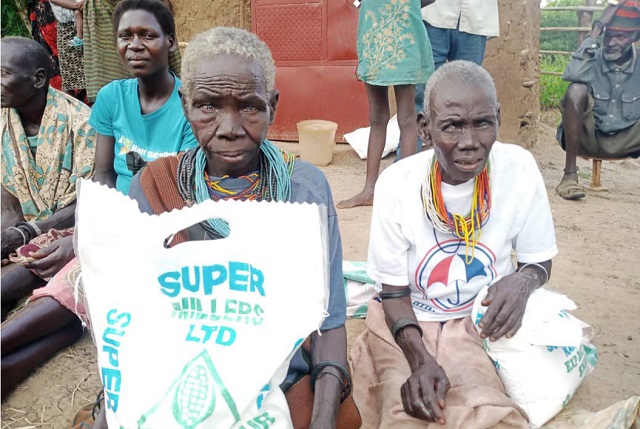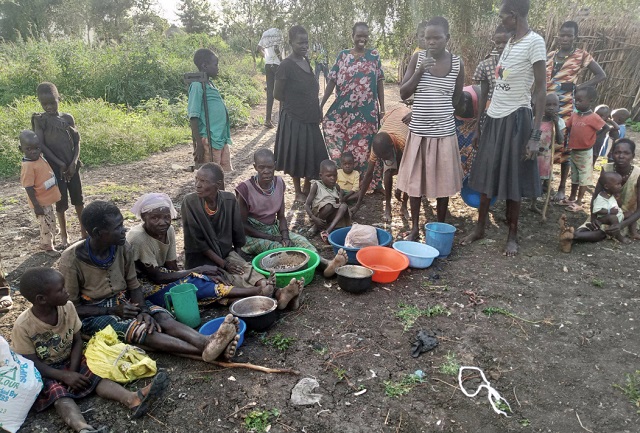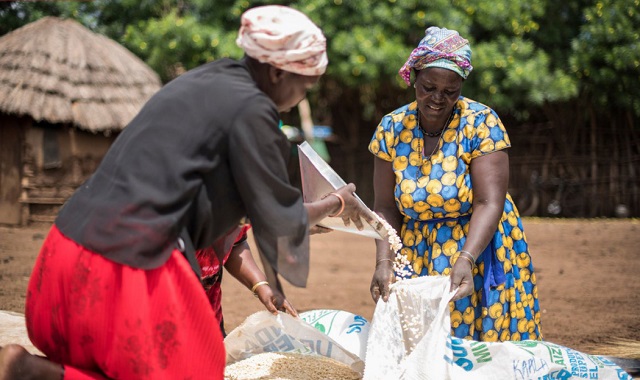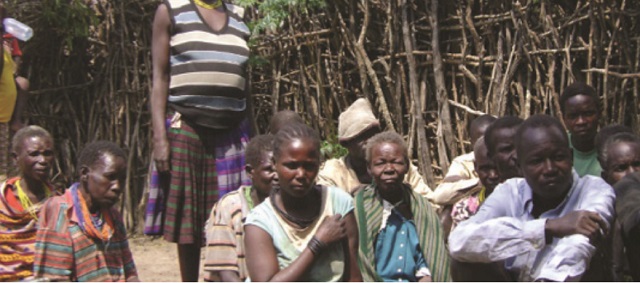
800 million people around the world affected
Kampala, Uganda | RONALD MUSOKE | In the week Ugandan legislators from the northeastern region of Karamoja shed tears on national television due to the alarming hunger situation in their home districts, a UN report warned that the situation could get worse.
The 2022 ‘State of Food Security and Nutrition in the World (SOFI)’ that was published on July 6 shows that world hunger and malnutrition is getting worse not better.
The report notes that nearly 670 million people (8% of the world population) will still be facing hunger in 2030 – even if the global economy will have recovered from the effects of COVID-19 pandemic and the Russia-Ukraine war.
The report shows that the number of hungry and malnourished people in 2030 will be similar to that of seven years ago in 2015 when the goal of ending hunger, food insecurity and malnutrition by the end of this decade was launched under the ‘2030 Agenda for Sustainable Development.’
According to the SOFI, the number of people affected by hunger globally was 828 million in 2021. That is 46 million more people than in 2020. The number of hungry people is up by 150 million since the outbreak of the COVID-19 pandemic.
This global figure of hungry people includes about 518,000 Karimojong (Approx. 40% of the Ugandan pastoral community’s population). This number is facing “high levels of food insecurity” according to the Integrated Food Security Phase Classification (IFPC) report of June.
“There is a real danger these numbers will climb even higher in the months ahead. The global price spikes in food, fuel and fertilizers that we are seeing as a result of the crisis in Ukraine threaten to push countries around the world into famine,” David Beasley, the executive director of the UN’s World Food Programme said.
“The result will be global destabilization, starvation, and mass migration on an unprecedented scale. We have to act today to avert this looming catastrophe.”
The report notes that the ongoing war in Ukraine, involving two of the biggest global producers of staple cereals, oilseeds and fertilizer, is disrupting international supply chains and pushing up the prices of grain, fertilizer, energy, as well as ready-to-use therapeutic food for children with severe malnutrition.
Supply chains had already been adversely affected by increasingly frequent extreme climate events, especially in low-income countries, something which had already sobering implications for global food security and nutrition.
The report highlights the intensification of major drivers of food insecurity and malnutrition: conflict, climate extremes, and economic shocks, combined with growing inequalities.
“The issue at stake is not whether adversities will continue to occur or not, but how we must take bolder action to build resilience against future shocks,” the heads of the five UN agencies wrote in the foreword in this year’s report.
“These are depressing figures for humanity,” said Gilbert F. Houngbo, the outgoing president of the UN’s International Fund for Agricultural Development (IFAD) during the release of the report in Rome, “We continue to move away from our goal of ending hunger by 2030.”
“We need a more intense approach to end hunger,” he added and warned the ripple effects of the global food crisis will most likely worsen again next year.
The 2022 edition of SOFI was jointly published by the Food and Agriculture Organisation of the United Nations (FAO), the International Fund for Agricultural Development (IFAD), the United Nations Children’s Fund (UNICEF), the UN World Food Programme (WFP) and the World Health Organisation (WHO).
The report presents updates on the food security and nutrition situation around the world, including the latest estimates of the cost and affordability of a healthy diet. It also looks at ways in which governments can repurpose their current support to agriculture to reduce the cost of healthy diets, mindful of the limited public resources available in many parts of the world.

The hungry rise
After remaining relatively unchanged since 2015, the proportion of people affected by hunger jumped in 2020 and continued to rise in 2021, to 9.8% of the world population. This compares with 8% in 2019 and 9.3% in 2020.
Around 2.3 billion people in the world (29.3%) were moderately or severely food insecure in 2021 – 350 million more compared to before the outbreak of the COVID‑19 pandemic. Nearly 924 million people (11.7% of the global population) faced food insecurity at severe levels, an increase of 207 million in two years.
Of the total number of undernourished people in 2021 (768 million), more than half (425 million) live in Asia and more than one third (278 million) in Africa, while Latin America and the Caribbean accounts for close to 8% (57 million).
In Africa, 35 million more people were affected by hunger in 2020 compared with 2019, prior to the outbreak of the COVID-19 pandemic, with an additional 15 million in 2021, for a total of 50 million more people in two years.
Similarly, 9 million more people were hungry in Latin America and the Caribbean in 2020 than in 2019, and an additional 4 million were thrust into hunger between 2020 and 2021. In Asia, the increases were 58 million in 2020 and 26 million in 2021.
The numbers also show persistent regional disparities, with Africa bearing the heaviest burden. One in five people in Africa (20.2% of the population) was facing hunger in 2021, compared to 9.1% in Asia, 8.6% in Latin America and the Caribbean, 5.8% in Oceania, and less than 2.5% in North America and Europe. Africa is also the region where the proportion of the population affected by hunger has increased the most.
Since the launch of the SDG Agenda in 2015, the prevalence of undernourishment for Africa has risen 4.4 percentage points, compared to 2.8 percentage points and 1.1 percentage points in Latin America and the Caribbean and Asia, respectively.
The UN describes undernourishment as a condition in which an individual’s habitual food consumption is insufficient to provide the amount of dietary energy required to maintain a normal, active, healthy life.
Almost 3.1 billion people around the world could not afford a healthy diet in 2020, up 112 million from 2019, reflecting the effects of inflation on consumer food prices stemming from the economic impacts of the COVID-19 pandemic and the measures put in place to contain it.
The gender gap in food insecurity also continued to rise in 2021. Close to 32% of women in the world were moderately or severely food insecure, compared to 27.6% of men – a gap of more than 4 percentage points, compared with 3 percentage points in 2020.
An estimated 45 million children under the age of five were suffering from wasting, the deadliest form of malnutrition, which increases children’s risk of death by up to 12 times. Furthermore, 149 million children under the age of five had stunted growth and development due to a chronic lack of essential nutrients in their diets, while 39 million were overweight.
Progress is being made on exclusive breastfeeding, with nearly 44% of infants under six months of age being exclusively breastfed worldwide in 2020. However, the report notes that this is still short of the 50% target by 2030. Of great concern, two in three children are not fed the minimum diverse diet they need to grow and develop to their full potential.
The increase in global hunger in 2021 also reflects exacerbated inequalities across and within countries due to unequal pattern of economic recovery among countries and unrecovered income losses among those most affected by the COVID-19 pandemic.
“The unprecedented scale of the malnutrition crisis demands an unprecedented response. We must double our efforts to ensure that the most vulnerable children have access to nutritious, safe, and affordable diets— and services for the early prevention, detection and treatment of malnutrition,” said Catherine Russell, the executive director of UNICEF.
“With so many children’s lives and futures at stake, this is the time to step up our ambition for child nutrition – and we have no time to waste.”
According to Dr. Tedros Adhanom Ghebreyesus, the Director General of WHO, every year, 11 million people die due to unhealthy diets. “Rising food prices mean this will only get worse,” said Ghebreyesus.

Market-distorting support
The report notes that worldwide support for the food and agricultural sector averaged almost US$630 billion a year between 2013 and 2018. The lion share of it goes to individual farmers, through trade and market policies and fiscal subsidies.
However, not only is much of this support market-distorting, it is also not reaching many farmers, hurts the environment and does not promote the production of nutritious foods that make up a healthy diet.
That’s in part because subsidies often target the production of staple foods, dairy and other animal source foods, especially in high- and upper-middle-income countries. Rice, sugar and meats of various types are most incentivized food items worldwide, while fruits and vegetables are relatively less supported, particularly in some low-income countries.
With the threats of a global recession looming, and the implications this has on public revenues and expenditures, a way to support economic recovery involves the repurposing of food and agricultural support to target nutritious foods where per capita consumption does not yet match the recommended levels for healthy diets.
The evidence suggests that if governments repurpose the resources they are using to incentivize the production, supply and consumption of nutritious foods, they will contribute to making healthy diets less costly, more affordable and equitable for all.
The report also points out that governments could do more to reduce trade barriers for nutritious foods, such as fruits, vegetables and pulses.
Yet, according to Qu Dongyu, the Director General of FAO, in low-income countries like Uganda, where agriculture is key to the economy, jobs and rural livelihoods have little public resources to repurpose.
Still, Qu said, FAO is committed to continue working together with these countries to explore opportunities for increasing the provision of public services for all actors across agri-food systems.”
For the incoming president of IFAD, Alvaro Lario, food systems and resilient global practices will be fundamental to building resilience at the local level.
“This means increasing local production, increasing the consumption of locally adapted crops and making sure that we support small scale producers in their adaptation to climate change shocks,” Lario said during his inaugural speech on July 7.
“We also need to ensure that women, girls and youth have equitable access to economic opportunities and productive resources,” he said, “We cannot reach the SDGs without harnessing the power of women and the energy of youth.”

****
 The Independent Uganda: You get the Truth we Pay the Price
The Independent Uganda: You get the Truth we Pay the Price


